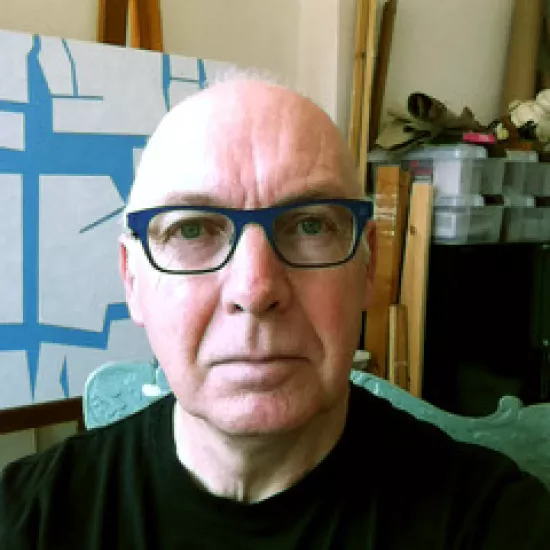
Robert Fones
-
E-mail:
-
Website:
Outline of Research
I am interested in the evolution of cultural or natural forms. These forms can be manufactured—like butter or type—or natural—like physiographical features or trees. These forms highlight otherwise invisible processes such as cultural or geological change or widespread networks of connection or distribution. I am also interested in the fundamental paradoxes of representational art—the illusion of pictorial depth on a two-dimensional surface. By exploiting this paradox in painting or photography, I present the viewer with contradictory visual information that draws attention to the underlying concepts or ideas I am working with. My work often uses humour to engage the viewer, question underlying assumptions and beliefs, and to hint at darker aspects of our culture.
Biography
Robert Fones began exhibiting in London, Ontario, in 1969, and has shown his work since then at Carmen Lamanna Gallery, S.L. Simpson Gallery and other commercial, parallel and public galleries within Canada. He has also exhibited in the United States and Germany. In 1989, The Power Plant organized a survey exhibition entitled "Robert Fones, Selected Works 1979-1989." Fones has published artists books with The Coach House Press and Art Metropole and has also written art criticism for Vanguard, C Magazine and Parachute. In 1990, he curated an exhibition for The Power Plant on the furniture design of Russell Spanner. In 2011 Fones received the Governor General’s Award in Visual and Media Arts. He is represented by Olga Korper Gallery, Toronto.
Approach to Teaching
I use many different strategies to allow students to learn in a way that works for them. My teaching involves short lectures, demonstrations, film clips, examples and in-class exercises related to the topic covered in a particular class. Whenever possible, I include two-dimensional and three-dimensional projects. If I am teaching something involving hand-eye coordination—whether using a traditional tool or a computer interface—I let students use the tool themselves rather than have them watch me use it. I like to work individually with students to help them achieve the goal they are striving for. I often introduce students to historical precedents for a particular project to provide them with an overview of what has been done, to offer a creative challenge and to encourage a creative dialogue with other graphic design and art practitioners. I urge students to articulate their thoughts about their own work and that of their fellow students. Both the artistic and the design process frequently involve subcontracting work or collaborating with other people. I believe artists and designers need to be able to communicate their ideas and expectations clearly and effectively.
For more on Robert Fones's activities see:
